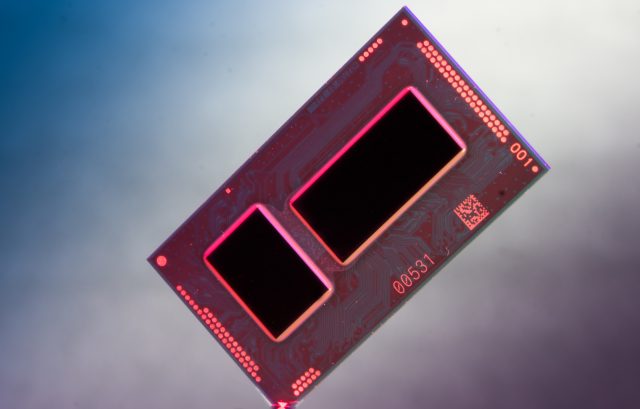
Today Intel is formally announcing the specific CPUs that will be going in these Core M tablets and convertibles, along with model numbers, clock speeds, and thermal design power (TDP) numbers. We'll talk about those first, comparing them to last year's Haswell-Y processor. Then we'll move on the actual Core M systems that have been announced so far and what we know about the more powerful members of the processor family. If you want details about Broadwell's new 14nm process and how Intel has shrunken Core M to get it into fanless systems, our original post has all of that information for you.

All of the chips have a default TDP (not SDP, mind you) of 4.5W, less than half of the 11W TDPs that the Haswell chips had last year. Intel has made some small sacrifices to get there, though most people shouldn't really notice them—the biggest is that the Core M 5Y10 and 5Y10a both share a base CPU clock speed of just 800MH and a GPU base clock speed of just 100MHz. The top-end 5Y70's base CPU clock is just a little higher, at 1.1GHz. Compare that to Haswell-Y chips from last year.

Those chips have higher base clock speeds, sitting at around 1.3 or 1.4GHz. All of these CPUs fluctuate up and down in clock speed so frequently that in normal usage the "base" speed doesn't really matter—the processor will either Turbo Boost past it to get something done quickly or slow down at idle to conserve power. However, for heavier workloads, the base clock rate is still the fastest speed at which the processor should be able to run at all times, and Intel is keeping it low to keep Core M from overheating fanless systems.
Intel's "Turbo Boost" feature is predicated on the idea that most computer use is "bursty," though, and for all but the heaviest workloads, that's the right move to make. If you're gaming or editing media, you're hitting your CPU and/or GPU with a fairly heavy workload most of the time. If you're doing nearly anything else—Web browsing, e-mailing, social networking, even doing heavy multitasking where you have a lot of windows open, your CPU is going to have a lot of time to sit idle. When it's called into action, Turbo Boost makes sure your system feels like it has a 2.0GHz CPU in it, not an 800MHz one.
In those use cases, Core M is actually quite a bit faster than Haswell-Y. The lower-end 5Y10 chips have single- and dual-core clock speeds of 2.0GHz, and the higher-end 5Y70 goes all the way up to 2.6GHz. We don't know quite how long the systems will be able to sustain those speeds—it's going to vary depending on system size and cooling capacity—but despite their lowered TDPs and base clock speeds, Core M should usually deliver on Intel's promised speed improvements over last year's chips.
-
Be careful when making assumptions based on Intel's provided performance numbers—the company has configured the Haswell chip to use a 4.5W TDP even though its default TDP is a much-higher 11.5W.Intel
-
Recognizing that very few people upgrade their PCs every year, Intel also provided some figures to compare Core M to a ULV processor from 2010.Intel
The Intel HD 5300 GPU is the first of Broadwell's new integrated graphics processors that we've seen—Intel's figures claim a 40 percent improvement in speed over the Intel HD 4200 GPU from last year, though as we pointed out above, those numbers may be a little fudged. The high-end 5Y70's GPU can go up to 850MHz, while the 5Y10 chips go to 800MHz. Don't expect to use any of these processors for heavy gaming in any case.
The 5Y70 and 5Y10a have additional configurable TDPs of 6W and 3.5W, available for OEMs who are building both larger and smaller systems (the 5Y10 can only go down to 4W). Remember, TDP doesn't dictate how fast the CPU is, just how long it can sustain those Turbo Mode speeds—raising or lowering the TDP increases or decreases the amount of time you can have the CPU sustain these higher speeds.
Finally, the top-end 5Y70 also supports business-friendly features like Intel's vPro, Trusted Execution Technology, and VT-d—given that two of the Core M systems we've seen so far have been business convertibles, this makes sense. Finally, all of the chips share 4MB of L3 cache and support for 1600MHz DDR3L and LPDDR3, the low-power memory that usually makes its way into tablets, convertibles, and Ultrabooks.
reader comments
64